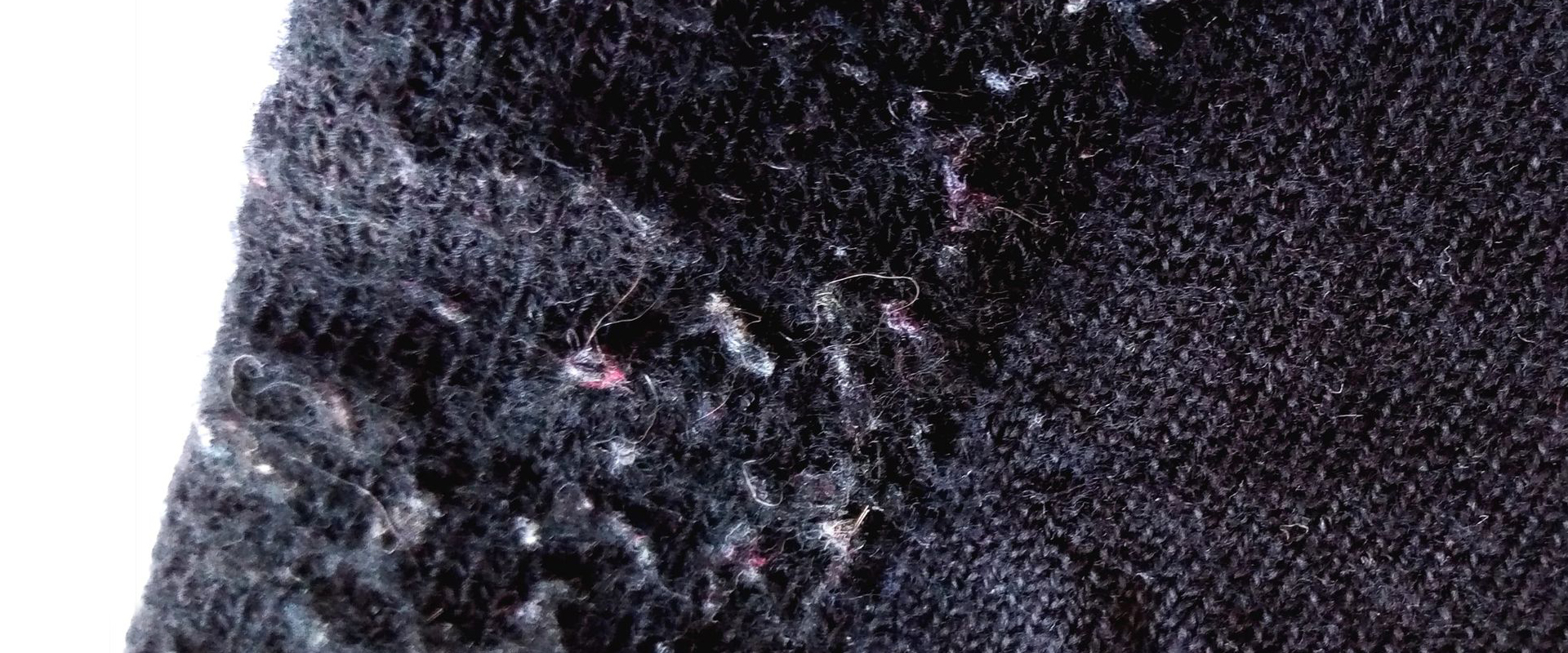You have probably experienced a garment pilling after just a few uses, right? It can be frustrating, isn’t it? So, what causes some garments to last for years without pilling while others develop pills in more exposed areas right away? I will tell you what causes pills and what you can keep in mind to prevent clothes from pilling.
Different materials consist of fibers of varying lengths and degrees of roughness. Some have smoother fibers, while others have rougher fibers. Natural fibers tend to be longer, while synthetic materials like acrylic have shorter fibers. It is the shortest and most uneven fibers that tend to pill the most. Pilling occurs when short fibers clump together to form small balls on the surface of the fabric. This is most common in areas of high friction, such as thighs, underarms, and where necklaces may have caused extra wear and tear.
To prevent pilling, sometimes short fibers are removed during the production stage, but this is not a guarantee that pilling will be eliminated. Other factors that influence the occurrence of pilling include the fabric weave, yarn spinning technique, and the tightness of the knit. The tighter the knit, the more difficult it is for the fibers to escape the fabric and form pills. This means that loosely knitted garments are more likely to pill than tightly knitted ones.
 Pictures from Максим Рыжкин and Sinval Carvalho on Unsplash
Pictures from Максим Рыжкин and Sinval Carvalho on Unsplash
It is easier to remove pills from natural materials than from synthetic ones, and it can be nearly impossible to predict in advance whether a garment will start pilling or not. However, here are my best tips to prevent pilling:
- Wash the garments correctly, following the instructions!
- Pills can be removed using a razor or a fabric shaver. Razors work best on tightly woven fabrics, not on knitted sweaters. Battery-operated fabric shavers are also useful to have. If you remove the pills with your fingers, it may result in more loose fibers coming to the surface and creating new pills.
- Some garments can be brushed with a clothes brush. A clothes brush made of natural materials removes dust, hair, lint, and dirt, which can otherwise form pills. It’s advisable to lightly spray the garment with water to make it slightly damp before brushing, and always brush in the direction of the fabric’s fibers.
- Choose tightly knitted garments over loosely knitted ones as they tend to have better durability. However, fine wool with long fibers also works well in loosely knitted garments! This results in a slightly fuzzy and comfortable garment.
- Wash wool only if necessary; often airing the garment is sufficient.
- Often, garments may pill in the beginning, but after removing the first round of pills, they usually stop pilling.
- Prefer garments that are not made of too many different materials, as they tend to pill more easily. A blend of two different materials usually works well.
- Be careful not to mix too many different materials in the washing machine, as some garments that shed fibers can get caught on the surface of other garments, which can cause pilling.
You can never completely get rid of pilling; it will appear when you least expect it, and there are no guarantees for completely pill-free garments. Often, pilling goes hand in hand with quality and price. The more expensive the garment, the better the quality. However, this is not always true either.

